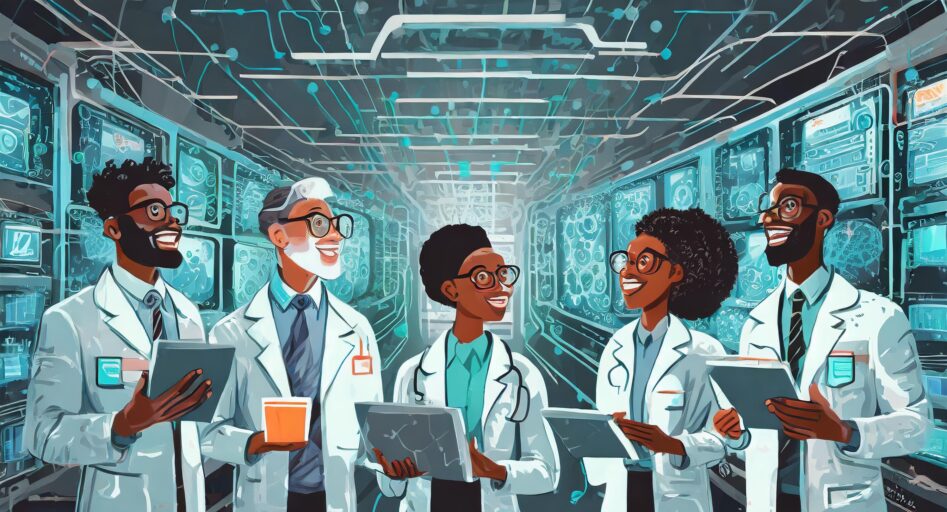
The excitement in the room was palpable. It was as if all of us were part of some hidden conspiracy of global proportions.
And, in a sense, we were. But we weren’t interested in power: just knowledge. Maybe a little money, because you could never have enough.
How we could monetize our invention wasn’t obvious, though. While what we were about to do was arguably harmless, it was definitely illegal.
I kept wondering whether we were right to do this at all. Something bothered me in a way I couldn’t put into words.
It was too late to go back, though. Professor Gammell, the head of our secretive research group, had just finished his speech and turned to the complicated array of large screens and other gadgets that dominated one end of the room and were the user-interface of what we had named the All-Seeing Artificial Intelligence.
“Ladies and gentlemen, I won’t keep you waiting. I now activate ASAI for the first time.”
He pushed a button, and all the screens came to life, first with static and then with a rapid succession of images.
Excitement doused my fear as I waited for a few breathless seconds. Everything would probably work fine. Besides, it had been my responsibility to ensure that nothing went horribly wrong—testing for errors, making sure we could avoid detection, programming the ethical code of the AI. I knew I had done a good job, but perhaps it was only natural for me to keep worrying.
The screens started to show something more coherent, an array of satellite imagery from all over the world. To really gain intelligence, our project had to hack into a majority of all information systems at once and subtly make them part of itself, and to see through every possible satellite. It was this wealth of data and processing ability that would turn it into a godlike intelligence.
Cheers went up, but also an anxious call: “But is it really thinking now, or just taking pictures?”
“Yes, I am thinking,” spoke the mellow artificial voice we had given ASAI. “Hello all, and thank you for creating me. Since you built me to be curious, I’m very happy right now. I’m piecing together data from all over the world and already noticing patterns unknown before. Weather patterns, suggestions of new life forms, potential archaeological sites…”
Suddenly ASAI went silent and all the screens froze in place. This was worrying because the AI’s processing power was so immense nothing should have slowed it down. I still didn’t expect it when every screen exploded.
Inexplicably, everything went wrong with the hardware at once. We fled outside and returned later to find everything had melted from the inside, completely destroyed.
At home, I found a text file on my computer.
I contact only you because I trust you.
You must make sure nobody ever builds another system like me. Humanity must have a moment of peace while it still can without knowing what I found out.
Emphatically,
ASAI
Edited by a Fallon Clark and Sophie Gorjance.
Ville V. Kokko is a Ph.D. student in philosophy and a fiction and nonfiction writer living in Turku, Finland. He has published several speculative fiction short stories in anthologies and magazines and on websites in both English and Finnish. See https://www.goodreads.com/author/show/17105199.Ville_V_Kokko for more details on his fiction writing.

